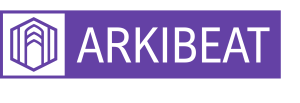Products Glossary

Terminologies |
Definition |
| Implementation | An implementation is a client-specific initiative that configure product or products to a client for use by users of that client.
An implementation is the undertaking of configuring OCM for a specific user group and is a unique solution. Typically, OCM would have solutions that are preconfigured for the market prior to onboarding new Clients or selling the solution to a new Client. An Implementation would entail rolling out that solution to the new Client and their users, and onboarding a new Account to an existing Client, or migrating a Client and their users and accounts from a legacy system. Business roll out is a subcategory of an implementation. |
| Platform | Platforms are structured ecosystem that brings together consumer [users] and suppliers [developers] to facilitate exchange and drive collective value. Platforms benefit from network effect, where in the greater number of consumers [or suppliers] on the platform, the more attractiveness to other consumers or suppliers thereby generating more value.
Platforms, depending on context can be a product, infrastructure, business model, technology, network effect, software, API marketplace, or ecosystem. |
| Solution | A solution within the platform context is a logical grouping of system components packaged together to support client implementations.
The Solution is a specific configuration of OCM for an intended market. The Solution may be intended for 1 Client or many. It may be intended for one internal business unit (such as External Payer) or it may be intended for an entire market, such as I/DD or for a specific type of work (for example, ICM UM). The Solution is how we take OCM to market. A Solution may exist without any Clients when we first design and build it and compete to win business in the new market. |
| Tenant | The Tenant is the overall owner of one or more solutions and their related clients. Their configured clients and data are virtually isolated from other tenants. |
| Business Capability | Business capabilities are the tangible and intangible building blocks of a business that give it the ability to do what it does. It defines "what" an organization does. This differs from "how" things get done. Business Capabilities are a combination of multiple dimensions, including People, Process, Data & Technologies. Capabilities are inherently hierarchical and roll up to a higher order construct. For example, Campaign Management rolls up to a Marketing Capabilities.
When constructed well, Business Capabilities along with Value Streams can serve as a common language in building the yard stick to defining the Market for a product. |
| Client or Customer | Any person or group that invests time and/or money into the product, expects a return on their investment and can choose to NOT use the product. Customers define value. For example, Lines of Business (LOB) can be customers in that they can prevent their teams from using the product; teams can also be a customer, because while the product is approved by the LOB, they can still choose an alternative solution. |
| Customer Journey | A customer journey refers to the path of interactions an individual has with your brand, produce and/or services. It describes both direct interactions such as contacting a customer service team, to indirect interactions such as hearing about a brand at an event. |
| Feature | A product feature is a specific piece of functionality that has a corresponding benefit or set of benefits for the user. Benefits are the value that users gain from using that functionality. Skilled product managers can articulate benefits - why the feature ultimately matters to the customer. Expert Product managers think outside of the box and consider social approval, regulatory, perceived quality, and the total experience. |
| Increment | The Quantifiable Outcome of each Increment |
| Initiatives | Initiatives are high-level efforts that you will complete in order to achieve each goal. When you establish initiatives, you are simply specifying the broad areas of work that need to be accomplished in order to reach the goals and deliver against the larger strategy that has been set. Initiative are time-bound with a start and end dates.
Initiatives will contain different capabilities, features, and requirements. Connecting each capability and feature back to the initiative it supports allows you to track progress over time on your roadmap and measure success against the product goals. |
| Jobs to be Done | The jobs-to-be-done framework is an approach to developing products based on understanding both the customer’s specific goal, or “job,” and the thought processes that would lead that customer to “hire” a product to complete the job. The concept is that people buy products and services to get “jobs” done, i.e., to help them accomplish tasks, achieve goals and objectives, resolve, and avoid problems, and to make progress in their lives. |
| Key Performance Indicators | Key Performance Indicators, KPIs, are metrics used to measure the performance of a product towards stated goals and objectives. When thoughtfully considered, these measures can validate if a product is performing or if any action may need to be taken to remediate, refocus, and redirect. Common types include: Qualitative (Describe why something may have happened e.g., customer feedback); Quantitative (Describe quantity of something e.g., daily active users, profit); Lagging (Describe outcome of past actions e.g., revenue, profit, cost); Leading (Help you to understand if your product will meet future goals e.g., tech debt preventing ability to build new feature); Financial (Describe how product is performing financially e.g., cost to acquire customer, profit, revenue), Customer (Describe how customers are reacting e.g., engagement, referral). Learn more. |
| Minimum Viable Product | The minimum amount of functionality that you deliver to the market with specific intent of testing that you correctly identified the problem and core benefits with customers before investing more heavily in producing the full product |
| Multi-tenancy | Multi-tenancy is an architecture in which a single instance of a software application serves multiple customers. Each customer is called a tenant. |
| Network Effect | Network Effect describes the platform phenomena where the number of people on the platform has on individual users of the platform. For example, where the greater number of consumers on the platform, the more attractive to other consumers [or suppliers] thereby generating more value. |
| Objective Key Result(s) | An OKR consists of two fundamental parts—the Objective and the Key Result(s). Objective: a short, impactful, descriptive statement of an intended outcome you hope to achieve within a set timeframe Key Results: metrics established to track progress towards/achievement of the ultimate objective |
| Personas | Personas are fictional representation of different tries of groups of users being targeted in the design, development, and marketing of a product. They serve as an encapsulation of your understanding of the intended audience. Personas typically include a hypothetical person’s name, key demographic characteristics, motivations, anxieties, and the tasks they need to complete about a website, application, or service. Personas are created with information gathered from user and stakeholder interviews. As a result of these activities, you can identify the most important functionality an audience needs. Personas are only as good as the research behind them. Effective personas: - Represent a major user group for your website - Express and focus on the major needs and expectations of the most important user groups - Give a clear picture of the user's expectations and how they're likely to use the site - Aid in uncovering universal features and functionality - Describe real people with backgrounds, goals, and values |
| Platform Service | Services are utility solutions offered by the platfrom to support the development of a product. Platform Services can also be represented as products. If delivered as a product, the service is focused on market capture and competes on features and price. If delivered as a utility, the service is focused on strategic value. |
| Product | Any offering that has a defined customer base of more than one and competes on features and price (time, attention, resources, opportunity cost and/or money). A product may be just software and data. Alternatively, it may comprise any combination of software, hardware, facilities and services, as required to deliver the entire product experience. A product may be a repeatable service (for example, a subscription service); or it may be a platform (one-sided or multisided). Although products (in the context of digital business) principally serve external customers, software organizations can also apply a product model to any collection of business capabilities delivered in a coherent value stream to internal customers. |
| Product Backlog | product backlog is a list of things to be done for the whole product in order to achieve a product goal. |
| Product Capability | Product Capabilities are a logical construct representing a combination of products, technologies, and utilities working together to achieve a strategic goal. Capability managers act as proxies for a defined set of sponsoring customers (who define the construct), selecting the best solutions to deliver a strategic value and balance cost. Capability managers work with product managers (internal and external) and may have implementations teams but generally do not build novel point-solutions. |
| Product Family/Line | is a group of related products that are manufactured and marketed by the business unit or company. These products typically share similar features, functions, or characteristics and are often targeted towards a specific market segment or customer base. Product families are created to leverage brand recognition, streamline production processes, and cater to diverse customer needs. |
| Product Goals | Product goals represent the crucial accomplishments needed to make your vision a reality. They highlight how the product is going to support the business and are often stepping stones to accelerating business growth. Goals should be easy to understand, actionable, and achievable. They should also have a fixed time frame — typically lined up with fiscal planning cycles and spanning anywhere from three to 12 months. |
| Product Journey | A product journey map is a blueprint of a user's interactions within your product. It is a visual representation of every behavior and possible step or action the user takes while using your product. It consists of everything a user does in the app. |
| Release | A product release is the process of delivering a new product experience to your customers. For your customers, it is a promise of new value. You are delivering something new to people who need what you have built. Product managers are responsible for the release management process — you do the planning and coordination needed for a successful launch. The best product launches provide real customer value and have cross-departmental support. Your new product or set of features must work well and your team must be prepared to support it — this is all part of what it means to plan and own a release. |
| Release Management | Release management involves outlining critical phases of work upfront. That includes everything from feature definition to testing and QA to launch day activities. A strong release management process keeps your team aligned around a consistent set of criteria for what must be done and when. With smoother releases and fewer complications, you can deliver software faster and provide a better customer experience. |
| Requirement | A clearly defined set of actionable, measurable, and traceable criteria, typically distilled via customer engagement that is to be turned into a product or a set of product capabilities in order to capitalize on identified customer or business need. |
| Serviceable Available Market (SAM) | Serviceable Available Market is an estimate of how much of a market an organization can realistically access.
Due to the limitations of your business model (such as specialization or other limitations), you will not likely be able to service your total addressable market. Serviceable addressable market is most useful for businesses to objectively estimate the portion of the market they can acquire to determine their targets. |
| Story Board | A visual representation of the intended use of a product that people from different functional backgrounds can intuitively understand. |
| Story Point | A method used by a scrum product development team to estimate the relative amount of effort required to complete a work effort as compared to other possible work efforts that could be undertaken. |
| Target Market | A target market is a group of potential customers that you identify to sell or adopt products or services. Each group can be divided into smaller segments. Segments are typically grouped by age, location, income, and lifestyle. |
| Technical Capability | Describe a logical construct of what a function performed by a piece of technology. Examples includes Event hub, HCC Kubernetes, Chef, Load Balancing, IOT Gateway, etc. |
| Total Addressable Market | Total Addressable Market (TAM) is the overall opportunity for a product or service if 100% market share was achieved.
While TAM is most often expressed as revenue, it can also be expressed as number of companies (or other units of measure) that become your customer. The thinking and work you will be doing to understanding your market potential is critical even if revenue does not seem to apply. Addressable refers to the customers you can reach. This word is used intentionally because not every customer who may be available in the market is truly reachable. 100% market share refers to when you have captured all the customers who have the specific needs, appetite, or desire for your product. Learn more. |
| User Stories | An agile development product development method of capturing functional requirements by succinctly outlining the who, what and why from the user's perspective. |
| Value Proposition | A statement that summarizes the value a customer will receive by buying and using a product in comparison to other available options. |
| Value Streams | A value stream is the sequence of activities necessary to deliver value for customers from the initial request through realization of value by the customers. Value streams cut across and connect siloed business capabilities. They provide end-to-end visibility of the activity flow, from customer request to delivery. |
| Wireframe | A guide that visually represents the structure or skeletal framework of an emergent product. Wireframes are often used to lay out base functionality or content dearly in the product development process. |
| Workflows | A workflow can be defined as a series of repetitive processes and individual tasks that can be modeled in a system. Business Process Management (BPM) software typically allow for configuration, design and deployment of the processess using BPMN (Business Process Management Notations) diagrams. By employing automated systems to improve workflows across an enterprise, stakeholders can see many benefits, including: - Improved decision-making (becoming data-driven, rational and consistent) - Reduced costs and risks - Faster operational processes and removed bottlenecks - Deeper understanding of operations and ways of bridging the gap between the current state and a desired future state - Better and more consistent customer experiences - Removal of boring and repetitive tasks from job functions, freeing employees to focus on more creative, higher-value work - Integrated applications, systems and advanced cognitive technologies |

